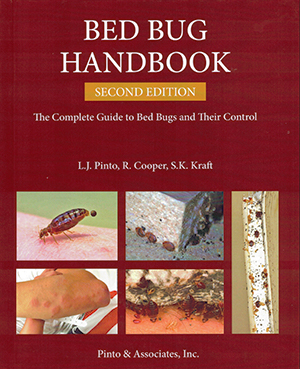Background on Demographics
 |
| What will your market look like in 5 years? 10 years? 25 years? It is sure to be different |
| Illustration © Levente Janos/iStockphoto |
What are “demographics” and why should you care? As to the second, you should care because demographics are useful for strategic business planning…how to position your business for success 5 or 10 or 20 years from now.
As to the first, demographics can be defined as simply any characteristics of human populations, but especially those characteristics related to marketing. Some examples are the proportion of a population that makes over $100,000 per year, or those over 60 years old, or those with a college education, or those living in single family homes.
The demographics of the pest control marketplace have been changing rapidly in recent years. They will continue major change over the next few decades, and this will in turn alter what people are looking for from pest control services. In a nutshell, customers are becoming older, wealthier, more ethnically diverse, and more numerous.
Baby Boomers Still Leading the Way
 |
| The baby boomer generation, born between 1946 and 1964, will accelerate the growth in the number of Americans older than 65, who will number 54 million by 2020. |
| Photo © Alison Trotta-Marshall/iStockphoto |
Perhaps most significant is the aging of the baby boom generation. This generation, born between 1946 and 1964, will accelerate the growth in the number of Americans older than 65, who will number 54 million by 2020. (This generation, now mostly in their fifties, is often graphically described by demographers as “a pig in a python” because it’s such a visible bulge in the population age distribution.)
These baby-boomers are the same generation that fostered the environmental movement, holistic health care, natural foods, new age, etc., and who radically changed society’s view of pesticides. Before baby-boomers, pesticides were considered a miracle of technology; in agriculture, the key to the “green revolution”; in public health, the answer to eliminating serious health pests, such as malaria mosquitoes; and in homes and businesses, the very foundation of pest control.
As baby boomers began coming of age, and with the rise of the environmental movement, pesticides came to be seen as a necessary evil (and to some, not even necessary), with major negative consequences on the environment and human health. It is the baby-boomer generation that should be given the blame or the credit, depending on your point of view, for the development of IPM, the loss of chlordane and other traditional insecticides, and the recent advances in pesticide and formulation technology designed to reduce pesticide exposure (insecticide baits being just one example).
As the baby-boomer generation reaches its peak economic power, and begins aging and focusing even more on personal health issues, how will they view pest control? What type of service will they demand? You can be sure it won’t be service that exposes them to what the generation sees as “chemical poisons.”
Here is a PDF file listing some of the more important demographics that will affect pest control in the coming decade: Demographics
What these statistics and trends shout to anyone listening is this:
- Your customer base will be older, more likely to be concerned about personal health and exposure to chemicals, and probably quicker to file a complaint or call an attorney if they feel they have been wrongfully exposed to pesticide hazards.
- Increasingly, you will be servicing accounts with elderly, disabled, or ill customers who may have depressed immune systems, take medications making them more sensitive to pesticides, have respiratory problems, be immobile, or suffer from dementia such as Alzheimer’s disease. Assisted living communities are a fast-growing market segment.
The most successful PCOs in the next decade will be those who move even further away from traditional pesticides and methods. They will direct their marketing to prospects less interested in efficiency and price than in “peace of mind.” And they will emphasize green service, monitoring, vacuuming and other nonchemical controls, IPM, baits and other low-exposure products, as well as new products and methods that avoid pesticide vapors or residues on accessible surfaces.
Ethnic Changes
 |
| By 2010, Hispanics will be the second largest ethnic/race group after whites. |
| Photo © Juan Estey/iStockphoto |
Demographics are not limited to age characteristics. Experts predict other changes that might allow you to position your company for success in the future. For example, four of every ten people added to the population through immigration over the next 50 years will be Hispanic. Over the next two decades, the Hispanic population is expected to grow by 1.2 million annually, compared with annual increases of 500,000 among non-Hispanic Whites and 400,000 each among Blacks and Asians.
Growth among the Hispanic and Asian populations is due to both natural increase and immigration, while growth among Whites, Blacks, and Native Americans results mainly from natural increase (births minus deaths). Hispanics are expected to increase from 12.6 percent of the population in 2000 to 18 percent in 2020, and Asians are expected to increase from 3.9 percent to 5 percent.
By 2010, Hispanics will be the second largest ethnic/race group after whites. The non-Hispanic white share of the population is predicted to fall from about three-quarters of the population today, to about one-half in 50 years. PCOs in areas with growing Hispanic populations had better gear their marketing and service towards the needs of those prospects.
For more information on population characteristics and trends in the U.S., go to the U.S. Census Bureau website (www.census.gov) and check out the reports and news releases.

